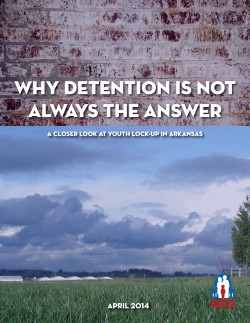
Juvenile detention – the short-term involuntary holding of juveniles – is often the gateway to longer-term incarceration. According to the Annie E. Casey Foundation’s Juvenile Detention Alternative Initiative (JDAI), the appropriate purpose of detention is to ensure that youth appear for court hearings and do not re-offend while awaiting their adjudication hearing. However, in practice, detention is also used for other purposes in Arkansas: to ensure that services are in place for the youth and his or her family, or to serve as a “wake-up call” for youth. And too often, youth are held in these jails because jurisdictions lack more humane or less restrictive alternatives. Relying on incarceration instead of more effective and appropriate responses to youthful transgressions can be very harmful to children who are already facing challenges at home and in school. Ultimately, that is harmful to our communities.
Over the past five years Arkansas’ juvenile justice system has undergone significant change. Between 2009 and 2013 the number of youth committed to the custody of the Department of Human Services Division of Youth Services (DYS) dropped 26 percent, and the number of beds at the high security Arkansas Juvenile Assessment and Treatment Center dropped from 143 to 100. These reductions reflect national trends to reduce incarceration by expanding access to more effective and less costly community-based supports and programs. The long-term goal, of course, is to reserve secure confinement for youthful offenders who pose a serious risk to public safety. Under new leadership, DYS continues to expand community-based services and reserves secure confinement for youth who present a threat to public safety.
Watch The Coverage
